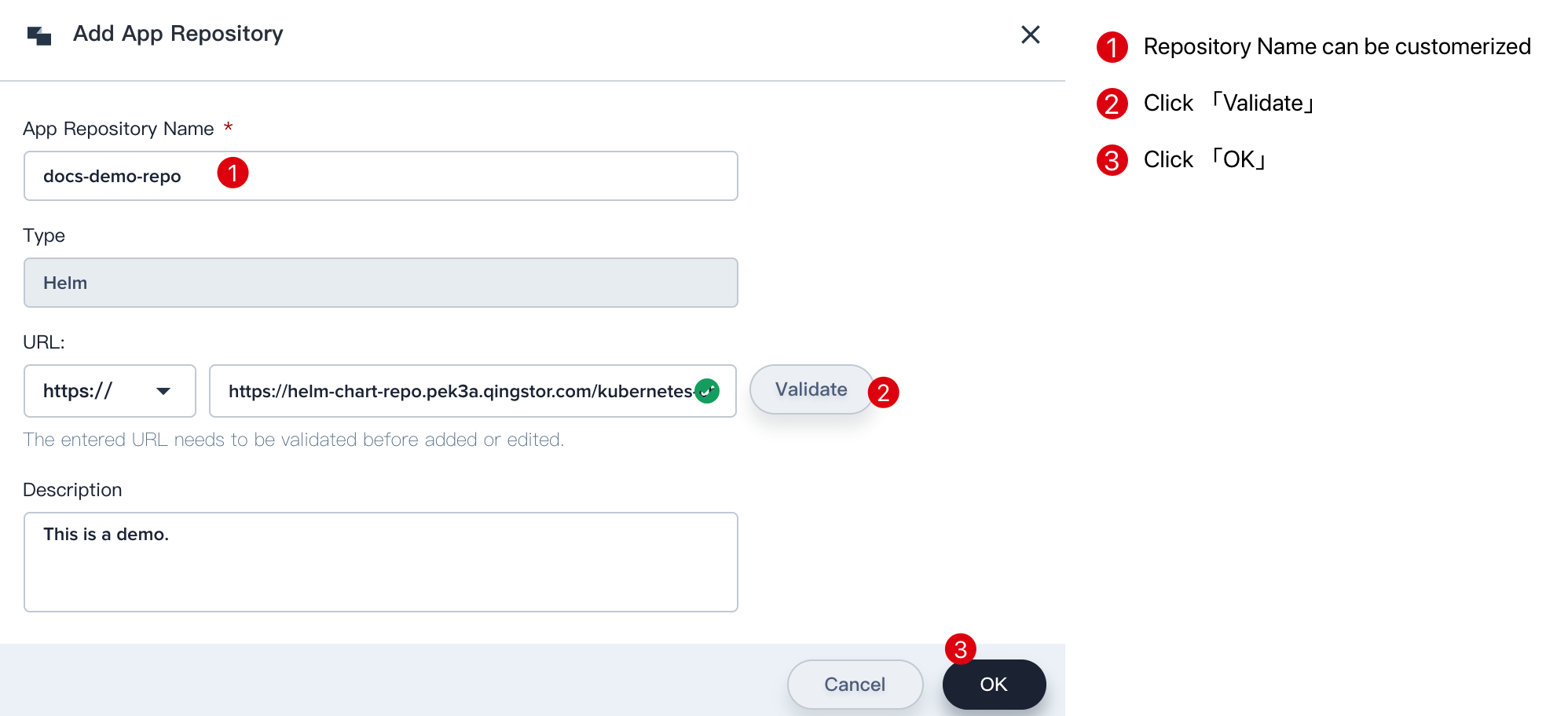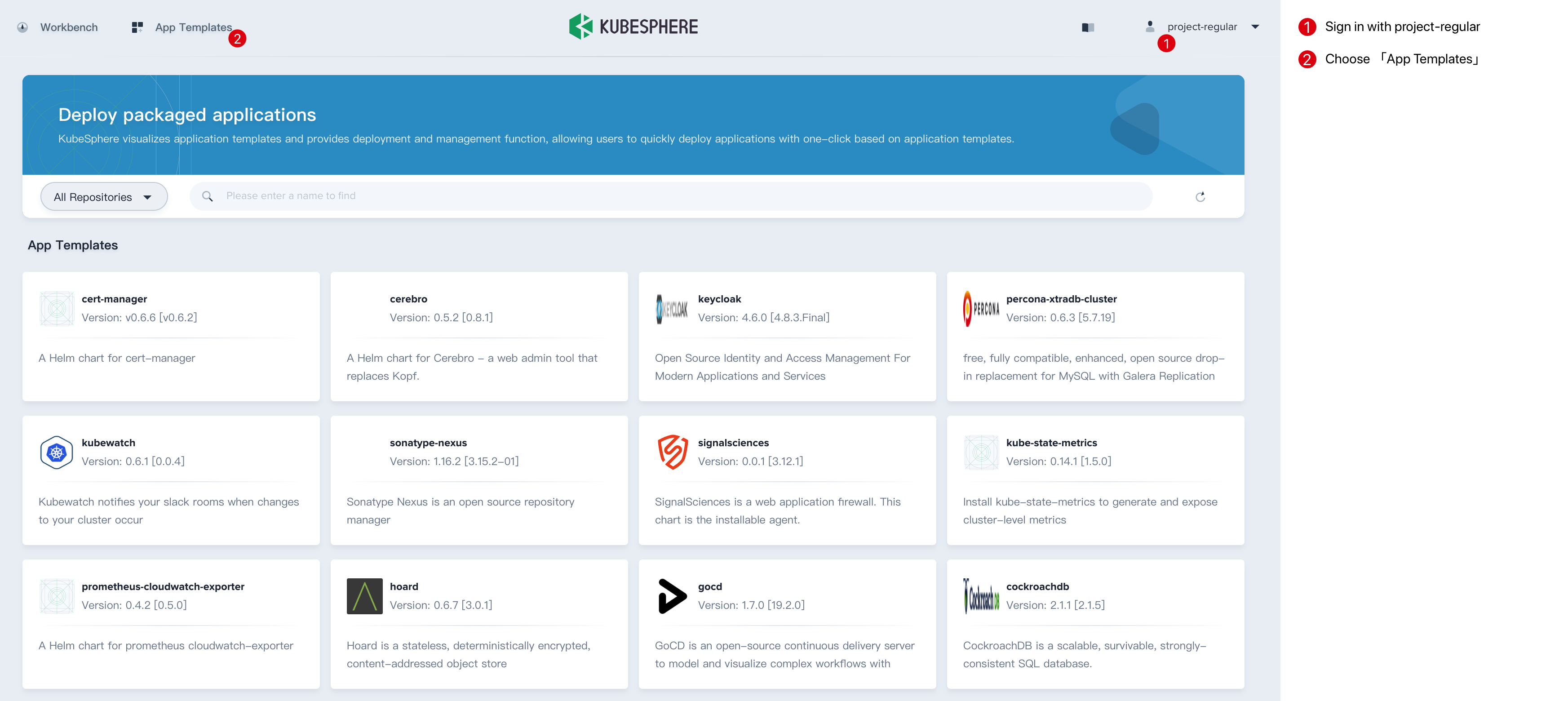Installation
Intruction
Install on Linux
Install on Kubernetes
Related Tools
Cluster Operation
Quick Start
Cluster Admin Guide
Multi-tenant Management
Platform Management
Infrastructure
Monitoring Center
User Guide
Storage
Configuration Center
Project Settings
Development Guide
API Documentation
App Template
The application template is the storage, delivery, and management approach for the application in KubeSphere. The application template is built on the Helm packaging specification and delivered through a unified public or private application repository. The application can be composed of one or more Kubernetes workloads and services according to the application's characteristics.
Application templates visualize and provide deployment and management capabilities in KubeSphere, enabling users to quickly deploy applications to pointed projects based on application templates. The application template can serve as a middleware and business system created by the enterprise, which could be shared between the teams. It can also be used as the basis for constructing industry delivery standards, delivery processes and paths according to industry characteristics.
Before using an application template, you need to add an application repository in advance. KubeSphere built an application repository service based on OpenPitrix. Before using the application template, you need to upload the Helm application package to the object storage, then add an application repository in KubeSphere. It will automatically loads all the applications as App template under this repository, as described in Add Application Repository.
In addition, application templates can also be combined with OpenPitrix's application lifecycle management capabilities to support docking ISV, and regular users through application uploading, application review, deployment testing, application publishing, application version management and more, finnaly build a public or private application store where offers application services for KubeSphere. Companies can also build industry-wide public or internal application stores to enable standardized one-click delivery of applications, see OpenPitrix Official Documentation.
Application List
In all projects, an application portal is provided, which serves as an entry point for the application template. Once the application is deployed, it can also be used as a list of applications to manage all applications under the current project.

Click Deploy New Application to go to the App Templates page.
Application Template
Add a sample repository
As mentioned earlier, before using an application template, the cluster admin needs to pre-add the available application repository so that users can access and deploy the application in the application template.
This document provides a sample application repository just for demonstration. Users can upload application packages in the object storage and add application repositories as needed.
- Sign in with the cluster admin account to the KubeSphere, then choose Platform Management → Application Repository to enter the list page.

-
Click Add App Repository button.
-
Fill in the basic information in the pop-up window, select https for the URL, fill in the blank with
https://helm-chart-repo.pek3a.qingstor.com/kubernetes-charts/, then click the Validate button. After the validation is passed, click OK to complete it.


Access the application templates
Log out and switch to sign in with project-regular account, the normal user of the project, click App Templates at the top of the console, you can see that all the applications in the sample application repository have been imported into the application template, then you will be able to browse or search for the desired app for one-click deployment to the desired project.

For an example of a step-by-step deployment application, refer to Quick Start - One-Click Deployment Application